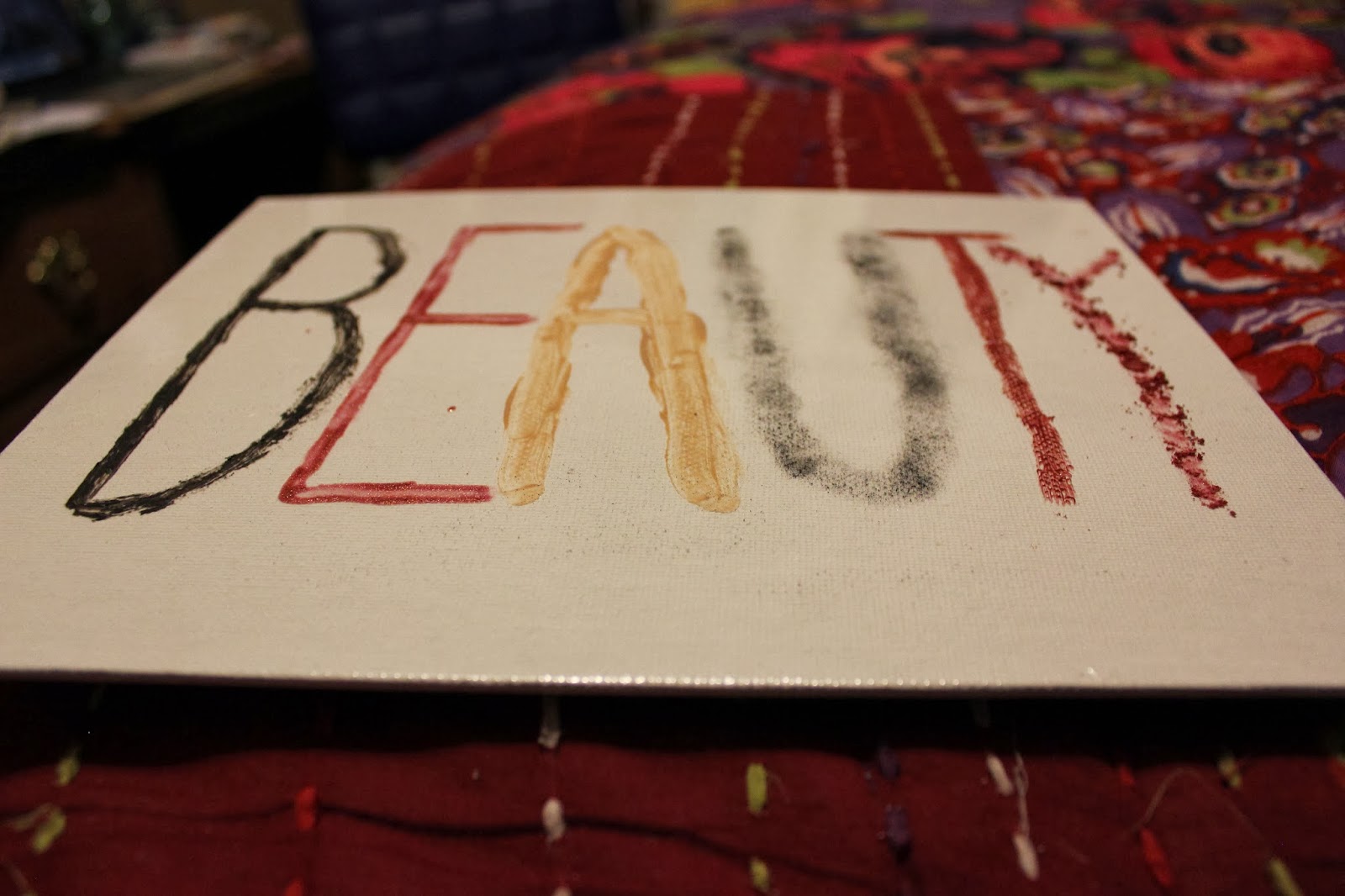Artist's Statement:
For this project, I decided to focus on the
medium of makeup. As a woman, this is the most pervasive artistic medium in my
life, as I work with it every single day. I thought about the qualities that
are unique to makeup, and I realized that a human face is essential to using
makeup as an art form. It turns out that if you take the face away from makeup,
it's just a bunch of chalk and mud. I guess that you could say this about most
artistic mediums. Clay, without being shaped, is just mud too. Paint, not on a
canvas, is just a tube of liquid that we probably shouldn't drink. However, I
think that this medium goes deeper. Makeup is an essential part of many women's
daily routine, including my own. I rarely leave the house without makeup on,
and when I do, it is only for a quick errand. I would never think about going
to school, church, or anywhere important without at least having basic makeup
on. I can’t say the same thing about the
medium painting or of clay. Women around the world smear these liquids and powders
and pastes on their faces everyday in order to feel beautiful. For many women,
including myself, makeup is an obligation and also an investment in ourselves.
Beauty rituals have existed for thousands of
years, but modern beauty rituals have become extreme, fueled by the beauty industry
and mass media telling women and girls what beauty looks like, and by showing
them exactly where they fall short in meeting these ideals. This media attack on girls has had a profound
impact upon the past few generations, a phenomenon that has explored in many works,
including the documentary Thin, which explores the modern anorexia epidemic in
the US. This epidemic has largely been fueled by the media and beauty
industries, as they constantly barrage girls into believing that they are not
good enough. I also thought of the documentary Miss Representation, which
discusses the ways that the media is giving girls a skewed expectation of the
way that they should look. Both of these documentaries came to my mind as I was
conceptualizing this project, as they have both been very influential to me in
my realization of what the modern media does to young girls. I was once a
victim of that media. As a tween, I spent a significant amount of my time
absorbing fashion magazines and doing everything that I could to be as
beautiful as the women on those pages. In working on this project, I also
thought of an episode of the National Geographic show Taboo, which depicts
extreme beauty rituals from around the world. The most haunting of these were
women in Russia who were willing to have their legs broken and stretched out
just so they could be just a few inches taller. Isn’t there something wrong
with our beauty industry if women are willing to subject themselves to pain, to
the point of getting their legs broken for the sake of beauty? This is not
beauty. When I was young, I was told that pain is beauty, and beauty is pain.
Shouldn’t it be the exact opposite? Shouldn’t being beautiful be being
comfortable in your own skin? As I was working on this project, I thought about
the comic “Show and Tell.” Instead of showing you what beauty is, I decided to
tell you about it. I used the medium of my own makeup (consisting of mascara,
lip gloss, foundation, eye shadow, lipstick, and blush) to show that beauty is
not these products, as the modern media and beauty industry would have us
believe. There is nothing beautiful about the project that I have created. It
is not astounding, breathtaking, or wonderful. It is just some paste and chalk
on a canvas. The beauty resides not in these products that we put on ourselves,
but in the faces beneath the products. Beauty is not these things that we put
on our bodies everyday in order to assuage societal norms about beauty. Beauty
is not making yourself starve so that you look like the model on the cover of
Cosmo. The modern media and the beauty industry have given women a skewed view
of what beauty is, and has told them that they are not good enough. My answer
to that nonsense is in this piece.












